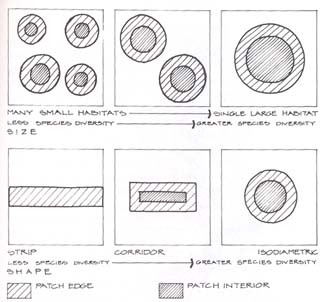| WILDLIFE
& DOMESTIC ANIMALS |
|
| Some people
think there is no wildlife in the city. Actually, many wild animals have adapted
very well to living off the scraps and garbage of humans. In some parts of the
country, mountain lions, coyotes, and even bears still live in the city. In
Philadelphia there are frequent sightings of deer, raccoons, skunks, rabbits, and
squirrels. There are also many animals that people introduced that have turned wild,
or feral. These include: dogs, cats, rats, and pigeons. All these animals can
be a nuisance if they attack pets, eat garbage, and litter the
sidewalk and parks. Furthermore, wild and semi-wild animals can be a major
health risk if they transmit diseases to pets and humans. In general, cities are not friendly to native wildlife. Those species that have survived have learned how to adapt to urban conditions. Many types of wildlife, such as song birds, would be beneficial additions to urban communities. Sometimes birds will nest in vacant lots or abandoned buildings, however, certain habitat configurations are better for promoting wildlife in urban environments. |
|
| In both urban and non-urban environments, different species of animals utilize different kinds of habitats. Some species prefer wetlands and some drier spaces, many small mammals live in fairly open meadows, but do not like enclosed forests. As the character of a habitat changes over time, the species of animals living in that place change too. |
|
|
REFERENCES
|
